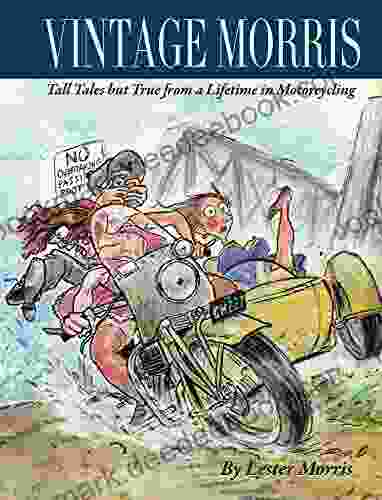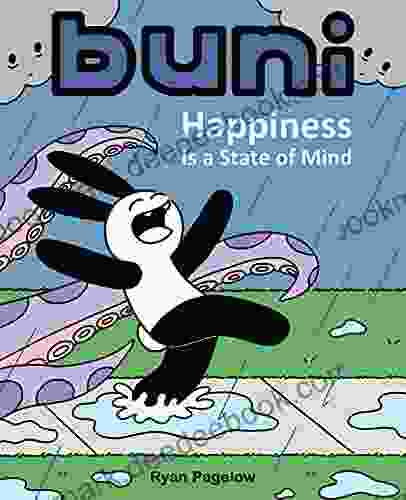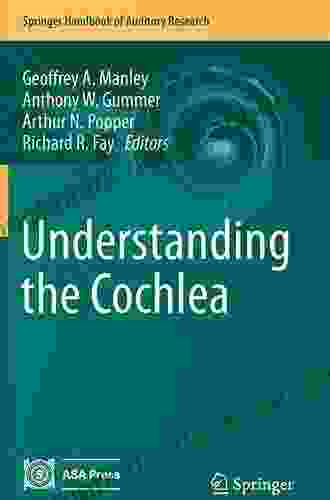Understanding the Cochlea: Springer Handbook of Auditory Research 62

The cochlea, a marvel of nature, is a spiral-shaped organ located deep within the inner ear responsible for converting sound waves into electrical signals that the brain can interpret. Understanding the functioning of the cochlea is crucial for gaining insights into the complexities of hearing.
The Springer Handbook of Auditory Research 62, entitled "Understanding the Cochlea: From Molecules to Models," delves into the intricacies of this captivating organ, providing a comprehensive overview for researchers and students alike. This article aims to offer a concise summary of the handbook's key findings and explore the fascinating realm of cochlear function.
4 out of 5
| Language | : | English |
| File size | : | 8116 KB |
| Text-to-Speech | : | Enabled |
| Screen Reader | : | Supported |
| Enhanced typesetting | : | Enabled |
| Print length | : | 374 pages |
| Paperback | : | 54 pages |
| Item Weight | : | 6.9 ounces |
| Dimensions | : | 8.5 x 0.14 x 11 inches |
Anatomy and Physiology of the Cochlea
The cochlea is filled with fluid and lined with delicate sensory cells known as hair cells. Sound waves entering the ear travel through the outer and middle ear, causing the cochlea's fluid to vibrate. These vibrations stimulate the hair cells, which in turn transmit electrical signals to the brain via the auditory nerve.
The cochlea is tonotopically organized, meaning different frequencies of sound are processed in specific regions along its length. High-frequency sounds are detected at the base of the cochlea, while low-frequency sounds are processed at the apex.
Hair Cells and the Sensory Transduction Process
Hair cells are the primary sensory receptors in the cochlea. They are mechanoreceptors, meaning they convert mechanical vibrations into electrical signals. Each hair cell has a bundle of stereocilia, tiny hair-like projections that extend into the fluid-filled cochlea.
When sound waves cause the fluid to vibrate, the stereocilia bend, opening ion channels at their tips. This allows ions to flow into or out of the hair cell, creating an electrical signal that is transmitted to the brain via the auditory nerve.
Cochlear Amplification and Tuning
One of the remarkable features of the cochlea is its ability to amplify and tune sound. The cochlea acts as a mechanical filter, resonating at specific frequencies and amplifying sounds within a narrow range.
This amplification is achieved through the interaction of the cochlea's fluid, hair cells, and a structure called the tectorial membrane. The tectorial membrane is a gelatinous membrane that sits above the hair cells and interacts with their stereocilia.
When sound waves vibrate the fluid, the tectorial membrane moves, shearing the stereocilia and enhancing the electrical signals generated by the hair cells. This process, known as cochlear amplification, contributes to the cochlea's remarkable sensitivity and frequency selectivity.
Computational Models of Cochlear Function
Mathematical and computational models play a vital role in understanding the complex dynamics of the cochlea. These models simulate the mechanical and electrical properties of the cochlea and can be used to predict its response to different sound stimuli.
Computational models have been instrumental in advancing our knowledge of cochlear function, informing research on topics such as auditory perception, hearing loss, and the development of cochlear implants.
Clinical Implications of Cochlear Function
Understanding the cochlea has profound implications for clinical practice and the treatment of hearing disorders. Cochlear implants, for instance, are devices that bypass damaged hair cells and directly stimulate the auditory nerve.
Research on cochlear function has also led to the development of diagnostic tools to assess cochlear health, such as audiograms and otoacoustic emissions. These tools help diagnose and monitor hearing loss, enabling early intervention and appropriate management.
The Springer Handbook of Auditory Research 62 provides an invaluable resource for anyone seeking a comprehensive understanding of the cochlea. Through its in-depth exploration of anatomy, physiology, and computational modeling, the handbook offers a comprehensive view of this intricate organ.
By unraveling the complexities of the cochlea, we gain insights into the marvel of hearing and open doors to new avenues of research and clinical applications. As we continue to delve into the cochlea's mysteries, we move closer to unlocking the full potential of our auditory senses.
4 out of 5
| Language | : | English |
| File size | : | 8116 KB |
| Text-to-Speech | : | Enabled |
| Screen Reader | : | Supported |
| Enhanced typesetting | : | Enabled |
| Print length | : | 374 pages |
| Paperback | : | 54 pages |
| Item Weight | : | 6.9 ounces |
| Dimensions | : | 8.5 x 0.14 x 11 inches |
Do you want to contribute by writing guest posts on this blog?
Please contact us and send us a resume of previous articles that you have written.
 Book
Book Chapter
Chapter Text
Text Story
Story Genre
Genre Reader
Reader Library
Library E-book
E-book Newspaper
Newspaper Bookmark
Bookmark Shelf
Shelf Glossary
Glossary Foreword
Foreword Preface
Preface Synopsis
Synopsis Scroll
Scroll Tome
Tome Bestseller
Bestseller Classics
Classics Biography
Biography Reference
Reference Encyclopedia
Encyclopedia Thesaurus
Thesaurus Narrator
Narrator Resolution
Resolution Card Catalog
Card Catalog Borrowing
Borrowing Stacks
Stacks Archives
Archives Periodicals
Periodicals Study
Study Scholarly
Scholarly Lending
Lending Rare Books
Rare Books Interlibrary
Interlibrary Study Group
Study Group Dissertation
Dissertation Storytelling
Storytelling Book Club
Book Club Textbooks
Textbooks Helena M Tabery
Helena M Tabery John G Jackson
John G Jackson Michael Bond
Michael Bond Jacqueline L Jackson
Jacqueline L Jackson Metallica
Metallica Laurren Schmoyer
Laurren Schmoyer James O Heare
James O Heare Olivia Lara
Olivia Lara Michelle Rawlins
Michelle Rawlins Philip G Schrag
Philip G Schrag David Schmidtz
David Schmidtz Jason Cj
Jason Cj Bodhipaksa
Bodhipaksa Mark Frost
Mark Frost John Ruskin
John Ruskin Shelagh Mckenna
Shelagh Mckenna Sean Thrower
Sean Thrower Melanie Shankle
Melanie Shankle Chris Cleave
Chris Cleave Preston Love Jr
Preston Love Jr
Light bulbAdvertise smarter! Our strategic ad space ensures maximum exposure. Reserve your spot today!

 Cristian CoxSleepless Nights: A Haunting Literary Journey Through the Dark Heart of New...
Cristian CoxSleepless Nights: A Haunting Literary Journey Through the Dark Heart of New... Christopher WoodsFollow ·3.8k
Christopher WoodsFollow ·3.8k Chinua AchebeFollow ·12.8k
Chinua AchebeFollow ·12.8k Ike BellFollow ·10.7k
Ike BellFollow ·10.7k Junot DíazFollow ·2.1k
Junot DíazFollow ·2.1k Richard WrightFollow ·5.7k
Richard WrightFollow ·5.7k Samuel Taylor ColeridgeFollow ·16.8k
Samuel Taylor ColeridgeFollow ·16.8k John SteinbeckFollow ·2.2k
John SteinbeckFollow ·2.2k Jared NelsonFollow ·13.5k
Jared NelsonFollow ·13.5k

 Oscar Wilde
Oscar WildeDon't Stop Thinking About the Music: Exploring the Power...
Music is an...

 Floyd Richardson
Floyd RichardsonSnowman Story Problems Math With Santa And Friends
It's a cold winter day, and...

 W. Somerset Maugham
W. Somerset MaughamWhat Every Classroom Teacher Needs To Know: A...
Teaching is a challenging...

 Edgar Cox
Edgar CoxTall Tales But True: A Lifetime of Motorcycling...
I've been riding motorcycles for over 50...

 Chinua Achebe
Chinua AchebeBuni: Happiness Is a State of Mind
Buni is a beautiful...

 Herman Melville
Herman MelvilleThe Arts and Crafts of Older Spain: Embodying the Essence...
In the heart of the Iberian...
4 out of 5
| Language | : | English |
| File size | : | 8116 KB |
| Text-to-Speech | : | Enabled |
| Screen Reader | : | Supported |
| Enhanced typesetting | : | Enabled |
| Print length | : | 374 pages |
| Paperback | : | 54 pages |
| Item Weight | : | 6.9 ounces |
| Dimensions | : | 8.5 x 0.14 x 11 inches |










